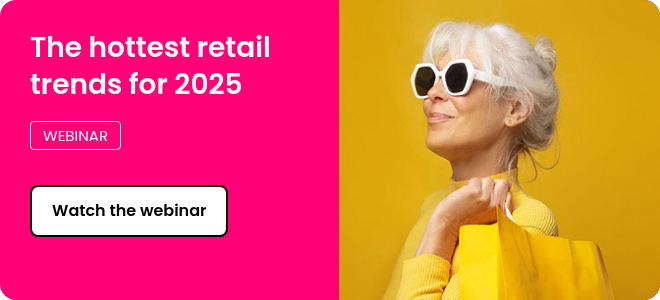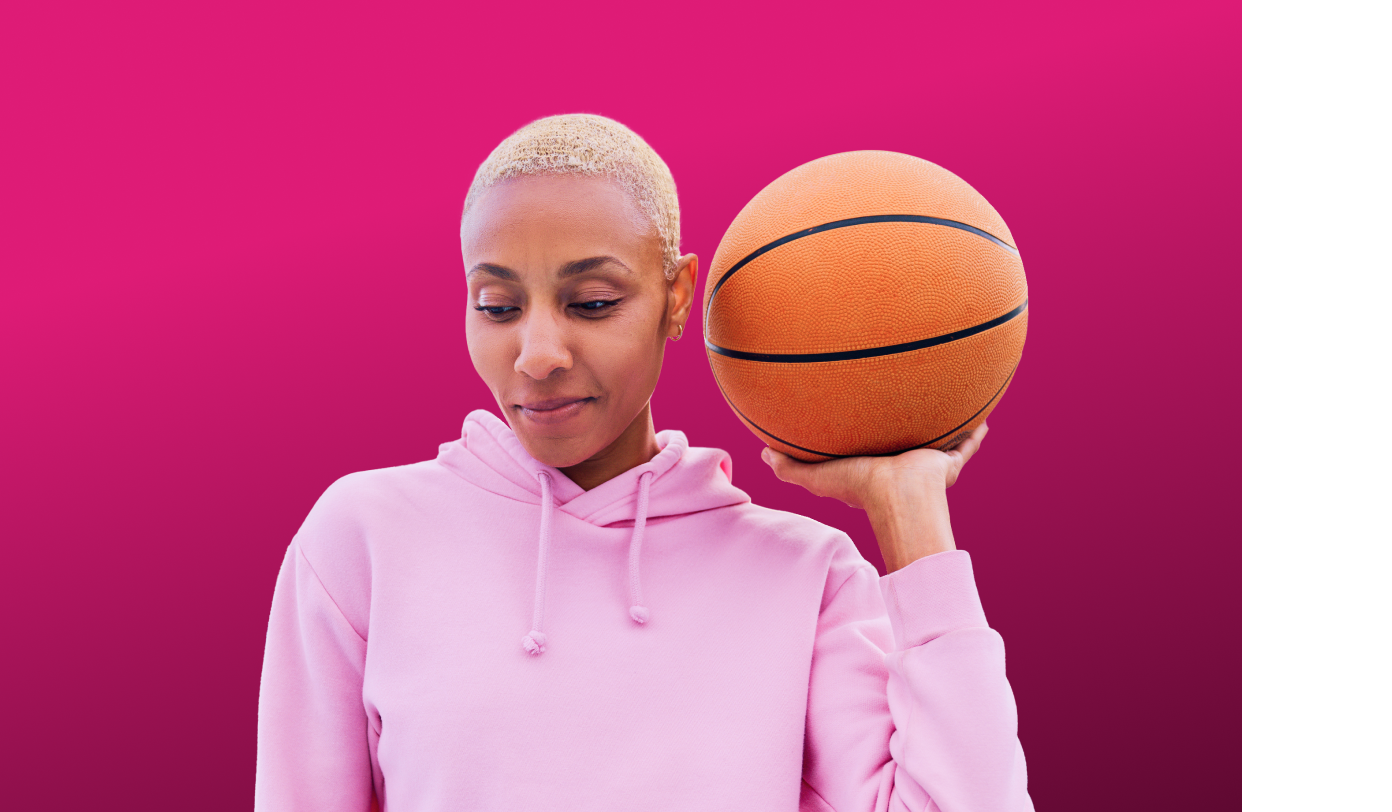Retail industry trends are moving faster than viral skincare on TikTok Shop. With more ways to shop than ever before, retailers need to find new methods to deliver against consumers’ ever-changing expectations.
Brands need the latest in consumer trends to know what their audience are buying right now, and what the major shopping trends to watch in 2025 are.
Luckily we’ve got stacks of consumer insight at the ready to help you work out what’s next for the retail industry. Let’s jump right in.
Top 10 retail trends worth watching:
- Hybrid shopping
- Frictionless delivery
- AI and personalization
- Retail media
- Inspiration-led purchase journeys
- Social commerce
- Athleisure
- In-store efficiency
- Sustainable shopping
- Second-hand luxury and dupes
1. Hybrid shopping
Globally, 59% of people are all about online shopping, while 41% still prefer hitting the stores in person.
Baby boomers are the only group where a majority (58%) prefers in-store shopping, but that doesn’t mean in-store shopping is irrelevant for everyone else. Quite the opposite, actually.
Over 2 in 5 Gen Z say they prefer it to shopping online, a figure that’s remained steady since Q3 2020. This retail trend is a reminder that despite digital advancements, the physical store experience still holds a lot of value for both older and younger shoppers alike.
Brands should focus on creating seamless, integrated omnichannel retail experiences that offer customers the best of both worlds – however and wherever they choose to shop.
But what does that look like? “Phygital retail” is a good solution for stores – combining the speed and convenience of online shopping with immersive in-person experiences and top-notch customer service. Let’s look at Sephora, for example. It gives customers the option to try on makeup in-store or via their AR-driven Virtual Artist app.
And this aligns with what consumers are saying in our data. When shopping in-store, over 1 in 5 US Gen Zers and millennials want to be left alone (as if shopping online), so it’s a good idea to offer immersive product demos they can interact with on their own. If they need help from staff, they’ll ask for it.
Streamlining the checkout experience will also help win over older shoppers – and the same goes for online shopping. Prioritizing fast delivery and free returns is an easy win, as 28% of US baby boomers say they buy more online when returns are free.
2. Frictionless delivery
83% of US online shoppers say free shipping is important to them.
Our on-demand world has raised the bar for the retail supply chain. Speed is just as important as convenience, from fast checkout to express delivery. And if you can’t meet consumer expectations? You can bet your bottom dollar your next best competitor will.
Since 2020, there’s been a 62% growth in the number of US online shoppers who say same-day delivery is important to them, with next-day delivery being the second fastest-growing purchase influencer in that timeframe (+25%). This is partly the result of the standards set by Amazon Prime and food delivery services, as some now offer goods like perfume that can be delivered to your door in as little as 25 minutes.
As retail trends go, this one isn’t going anywhere. Among US baby boomers, same-day delivery (+45%) and next-day delivery (+23%) have both grown in importance as key purchase drivers since Q2 2022. And looking at the wider consumer pool, fuss-free returns are a big selling point for 64% of US online shoppers.
Speed is important when it comes to delivery services, but it’s not the only thing that matters to consumers. Since 2022, the following factors have also grown in importance for online shoppers in the US:
- Positive social media comments (+10%)
- Bookable delivery slots (+8%)
- Personalized recommendations (+7%)
- Good reviews from other customers (+7%)
If you want to go a long way with these shoppers then streamlining the order tracking process by providing real-time updates and easy access to delivery status is key. Improve communication with customers by offering clear, proactive notifications about any delays or changes in delivery schedules. By being transparent and keeping them informed, you’ll build trust and keep them coming back.
On top of that, brands can offer flexible delivery options, like allowing customers to choose specific time windows or alternative delivery locations. By partnering with reliable couriers and optimizing logistics to ensure consistent delivery times, brands can build trust and minimize the uncertainties that often cause friction in the delivery process.
3. AI and personalization
Younger US shoppers stand out for wanting tailored recommendations when shopping online.
Despite the negative rep it’s getting in the media, 56% of Gen Z say that AI will have a positive impact on the future of society, and they’re already improving their research skills through this technology. Brands in the retail industry would be crazy to ignore it.
Not only is AI useful for creative purposes, it’s also an effective way to improve omnichannel shopping experiences. Retailers can quickly understand customer preferences, then personalize promotions and product recommendations across ecommerce sites, social media, apps, and marketing channels.
Convenience is key to success. Zara’s AI robots are a great example of automation being used to speed up collection and cut down queue time.
4. Retail media
30% of Americans say they typically hear about new products via retail sites, ecommerce sites, or ads/sponsored posts – up from 25% in 2020.
Okay, this one isn’t a traditional retail trend, but it would be totally remiss of us if we didn’t mention retail media here. Worldwide retail media ad spend is tipped to max out at over $150 billion this year, so it’s no big shock that more brands in this space want a slice of the action.
Any brand with a decent amount of first-party data knows it can monetize its audience, but the competition is fierce with so many retail brands launching retail media networks to generate revenue from their digital platforms.
This offers a huge opportunity for brands to connect with shoppers at key points in their purchase journey. By using first-party and third-party data, they can create more personalized and relevant ads, improve conversion rates, and drive customer satisfaction.
For retailers offering these networks, it gives them more than just an additional revenue stream. They can leverage them to deepen partnerships with brands, driving mutual growth and innovation, and provide a more personalized shopping experience for their consumers.
5. Inspiration-led purchase journeys
Gen Z are more likely to use the internet to find new ideas and inspiration (51%) than to research products/brands (42%).
These days, people aren’t necessarily looking for something to buy. With more consumers going online to discover something new, inspiration is playing an increasingly important role in retail purchases.
It’s a retail trend primarily driven by younger shoppers, with social media ads being the top way Gen Z find new brands and products. In fact, the difference between social media ad discovery and search engine discovery within this generation has grown from 5% in Q1 2021, to 12% in 2024. We all know social platforms are packed with tempting opportunities to buy, and luxury buyers in particular can be swayed by a well-placed “Buy now” button.
With older consumers starting to follow suit, retailers should optimize their ad targeting across the board to entice shoppers to buy on a whim. People want to be inspired.
6. Social commerce
1 in 4 Gen Z say they’re more likely to buy a product with lots of “likes” or positive comments.
As we just covered, social media is an incredibly powerful selling tool, with social ads creating an inspirational path to purchase for many brands. Temptation is everywhere and with opportunities to buy blended into everyday interactions, social shopping feels like the most natural thing in the world. Especially when users can easily check out in a few clicks.
Social commerce goes hand-in-hand with the rise of livestream shopping, which has become very popular in certain parts of the world. Globally, consumers in APAC are most likely to say they use social media to watch livestreams; they’re 13% more likely than the average consumer to say it’s their main reason for using it. It’s no wonder TikTok is expanding its in-app shopping capability with “Trendy Beat” – a place to buy products that go viral.
By tapping into what’s culturally relevant to target audiences, brands can share timely inspirational content to drive mega sales on social media. Pay attention to what audiences want, and find ways to reflect this in your messaging.
7. Athleisure
The number of global consumers saying they buy from New Balance (+26%), Gymshark (+25%), and Lululemon (+20%) is up year-on-year.
A while ago we wrote about the rising trend of athleisure. It was one of the fastest growing fashion trends of 2023, and with Gymshark posting its biggest revenue ever, there seems to be no end in sight to our love of everyday activewear.
There are a few tell-tale signs that things might be tailing off.
Firstly, the athleisure market has grown at the speed of light, and loads of brands have entered the space. Almost all clothing retailers now sell some form of athleisure wear, offering enough choice to make consumers’ heads spin, and it looks to quickly be becoming an oversaturated market.
Secondly, fashion is fickle. Trends are often cyclical, and while athleisure has been dominant, other trends could emerge that shift consumer preferences. If the fashion industry pivots towards more formal or alternative casual wear, athleisure could be on the outs.
But it’s not all doom and gloom. Our data suggests that consumers’ attention can still be caught with things like collaborating with designers, celebrities, or other brands on limited-edition collections. These collabs can also introduce the brand to different markets and demographics. Focusing on strategies like this, athleisure brands can remain competitive, meet evolving consumer demands, and continue to grow in a dynamic market.
8. In-store efficiency
70% of US online shoppers say product availability and store tidiness is big on their list of important things when shopping in-store.
Many brands already understand that consumers aren’t ready to walk away from shopping in-store. The likes of Kohl’s, Target, and Barnes & Noble are all in the process of, or planning to, open smaller-format retail stores.
Meanwhile in the UK, a new initiative has been introduced to spruce up London’s Oxford Street and help up-and-coming businesses open pop-up shops in this prime location.
But new stores aren’t the only thing consumers are looking for when shopping in person. So what have been the biggest changes in in-store purchase drivers over the last two years?
- Product demonstrations (+12%)
- Good restrooms (+9%)
- Free samples (+7%)
- Good fitting rooms (+6%)
- Loyalty points (+6%)
- Friendly service (+5%)
- Free gifts (+5%)
The main thing to keep in mind for brands when it comes to attracting more customers to their stores is providing a great customer experience. It’s still at the heart of in-store shopping and all future retail trends.
9. Sustainable shopping
58% of consumers would rather pay more for an eco-friendly product.
On the surface, this sounds like a positive move for the retail industry, but let’s look at the bigger picture here: consumers’ desire for brands to be eco-friendly has declined. The big question – how do those two retail trends align?
It’s no secret that they don’t. Consumers can be contrary, and what they say they do doesn’t always match what they actually do. Our Core Plus research sees a similar downward trend across five key European markets. When thinking about the food they eat, the number of consumers who say locally-sourced food or sustainable/eco-friendly products are important has plummeted since Q1 2023 (-13% & -21% respectively).
People have good intentions. But as prices rise, sustainability is becoming more of a luxury. Consumers will only make eco-friendly choices if they can afford to.
10. Second-hand luxury and dupes
Consumers who buy from luxury brands are 29% more likely to say they’ve purchased pre-owned items online in the last week than average.
A luxury lifestyle vlogger recently said that there are so many high quality dupes on the market now that the only true way to figure out someone’s economic status from their appearance is their haircut.
The ‘old money’ aesthetic has been on the rise for the past 2 years, but with a Birkin retailing between $10,000 and $20,000 – the real deal in high-end luxury is a bit out of reach for many younger consumers. Instead they’re achieving the designer look for less with things like vintage items and investing in the circular economy, and we recently saw a wave of young TikTokers publicly outing themselves for wearing dupes. Quite a clever way around money issues during a cost of living crisis.
But that doesn’t mean these younger consumers aren’t willing to spend where they can. In the UK, 60% of Gen Z say they’ve bought from a luxury brand in the last year, higher than any other generation. These consumers are willing to invest in signature pieces, and will often mix authentic luxury items with dupes, or second-hand pieces.
Key takeaways
Looking at these top retail trends, the future of shopping points in one direction: frictionless retail. Expect to see this take center stage as physical and digital journeys become more interlinked and personalized with the help of AI and emerging retail technology.
Ultimately, it’s about listening to what consumers want. Simplicity, speed, and flexibility are all key to enticing shoppers and winning brand loyalty in an increasingly competitive retail landscape.
Why are retail trends important?
Retail trends not only help you shape and improve the customer experience, they also steer businesses in the right direction (more ROI, please and thank you). Staying ahead of today’s top retail trends will help you:
Gain a competitive edge
If you don’t keep up with trends in the retail industry, you’re fighting a losing battle. Use on-demand consumer insights to quickly understand what’s driving shoppers to buy, and you’ll uncover cross-market opportunities you never knew existed.
Shape your strategy
Knowing the retail trends that matter helps you make better data-led decisions and stay on top of what matters to your customers at any given time. Keeping your finger on the pulse is how you keep revenue rolling in – even as things change.
Manage customer expectations
Customer expectations are sky high, so you need to know exactly what they want from you, and how best to deliver it. This is becoming increasingly vital to customer satisfaction as retail expectations continue to shift.
Retail trends FAQs
What are retail trends?
Retail trends are key changes in the retail sector that affect the way customers shop and businesses operate. They can be influenced by multiple factors, like new technology and the economic climate.
How do you gauge future retail trends?
To get a better steer on what’s happening in the market, look to consumer insights. Changes in consumer behavior are a big indicator of wider shifts in the retail landscape.






.webp?width=495&height=317&name=pink_thumb_graphs%20(1).webp)
.webp?width=495&height=317&name=pink_thumb_letter%20(2).webp)